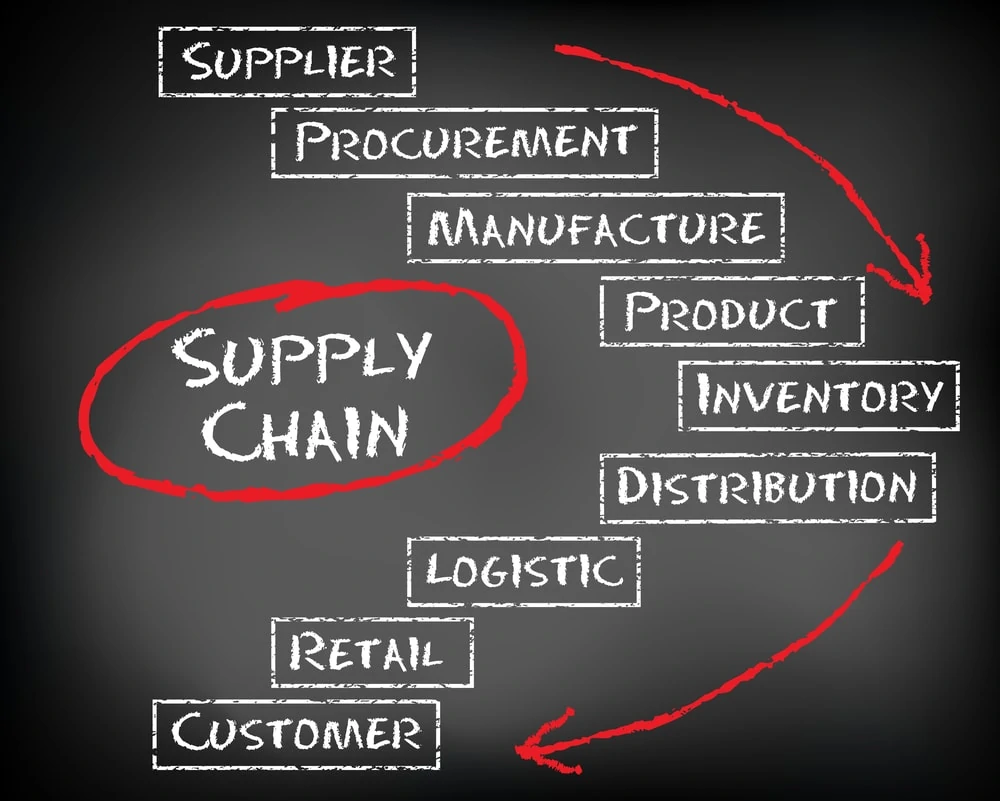Increased collaboration and the alignment of objectives has meant that supply chains have never been in better shape. However, the pandemic has caused some major setbacks, writes Alexandra Kimmons
Technological advancements, international collaboration and alignments of objectives have helped improve the quality and speed of China’s supply chains in recent years, according to Alex Makino-Farrell, CBBC‘s China market business adviser. But the pandemic has exposed certain fragilities and illuminated a need to improve resilience in the future. “During the Covid-19 pandemic, supply chains, particularly those to which China is central, have experienced disruption at both ends,” he says. “The impact was first felt at supply level as China went into lockdown before demand took a hit as other countries began to feel the effects of the pandemic.”
The initial impact of the lockdown on supply chain activity in China was limited, as it coincided with the low-season period surrounding Chinese New Year, explains Emily Zhu, head of logistics development and sourcing at AkzoNobel China. “The three greatest immediate challenges facing supply chains at present are raw materials shortages, limitations to manufacturing capacity, and a shortfall in available transportation resources,” she says. “Many of the challenges in this respect are linked to restrictions on movement and quarantining requirements arising from the pandemic. For example, shipments being blocked within Chinese ports after arriving from overseas, and labour shortages as migrant workers choose to remain in their hometowns and drivers are required to quarantine when travelling between Chinese cities.”
The three greatest challenges facing supply chains are raw materials shortages, limitations to manufacturing capacity, and a shortfall in available transportation
Outside of China, Peter Riches, managing director, SinoScan UK says that the huge increase in demand for air freight during the pandemic necessitated transporting as many goods as possible by sea – a challenge which SinoScan tackled by working closely with its customers to understand their specific needs and tailor operations accordingly. For Andrew Nyadzo, head of Procurement, Volution Group PLC, keeping lines of communication open with Chinese partners and suppliers was key to combatting challenges of supply and demand during this time. “Having an on-the-ground presence and the continuity this has created has even made new product launches possible, despite uncertain market conditions,” he says.
Having an on-the-ground presence and the continuity this has created has even made new product launches possible, despite uncertain market conditions.
A key issue that has been revealed due to the pandemic is the centrality of China within global supply chains. Nyadzo explains that although his company considered sourcing from suppliers outside of China as the pandemic hit, this would merely have mitigated rather than eliminated risk, as core components still tended to come from China. “While it used to be assumed that if the United States ‘catches a cold’ the whole world is affected, the same can now be said of China,” he says. “And that in order to address the potential issues associated with this phenomenon, wider discussions need to be had by the industry as a whole and at all levels of the value chain.”
A number of ongoing challenges currently face supply chains, including geopolitical factors such as the US-China trade war that makes it difficult to ensure security of supply; and the high unemployment rate in China as a result of the pandemic, which has resulted in a reduction in exports. However, recent investment in Chinese SMEs – particularly in new machinery and education and training – create opportunities, and technological advances such as supply chain digitalisation were further acknowledged as important developments to be embraced.
Chinese government-backed initiatives also continue to present opportunities within global supply chains. Not only was a commitment made by the Chinese government during the Two Sessions 2020 to continue its efforts to stabilise supply chains, but the panellists all acknowledged the opportunities created by China’s Special Economic Zones (SEZs). “Notwithstanding the potential for some parts of supply chains to become more localised in the short term, the continuation of large-scale international trade makes it sensible for small- and medium-sized UK companies to take advantage of the local resources and tax benefits offered by SEZs in the medium term,” says Riches.
Chinese government-backed initiatives such as China’s Special Economic Zones continue to present opportunities within global supply chains
Sustainability was also viewed as an increasingly important factor in shaping the future of the supply chain. “The carbon footprint involved in shipping parts from China to the UK cannot be avoided simply by manufacturing elsewhere, given that components still need to be shipped from China earlier in the chain,” says Nyadzo. “This issue necessitates industry-wide discussions, particularly within the electronics industry.”
Supply chains are already showing signs of bouncing back from the effects of the pandemic. AkzoNobel’s cross-functional approach has allowed the company to tackle challenges at all levels of the supply chain, with dedicated teams reviewing developments on a daily basis. This holistic approach has allowed the company to achieve 80 percent recovery of business. Similarly, a number of SinoScan’s suppliers have reported recovering capacity of between 80 and 90 percent of their pre-Covid levels. However, with a reported average of around 50 percent reduction in sales during the first quarter of 2020, SinoScan’s suppliers are keen to get going and progress is already being made in this regard.
The developments of the last six months have illuminated the potential for longer-term improvements in the design and operation of global supply chains. “The pandemic certainly has exposed weaknesses in the global supply chain,” says Nyadzo. However according to Riches the changes required are less comparable to “rewiring a house” than to simply “checking the security of the wiring.”
“The pandemic has enhanced end-to-end cooperation, cross-functional decision making, and collaborative risk management,” says Zhu. It also has amplified the value of procurement, resulting in an increased voice being given to key players in the supply chain that had previously been overlooked.
Additional reporting by Hannah Williams
Please view here to watch more on this topic


